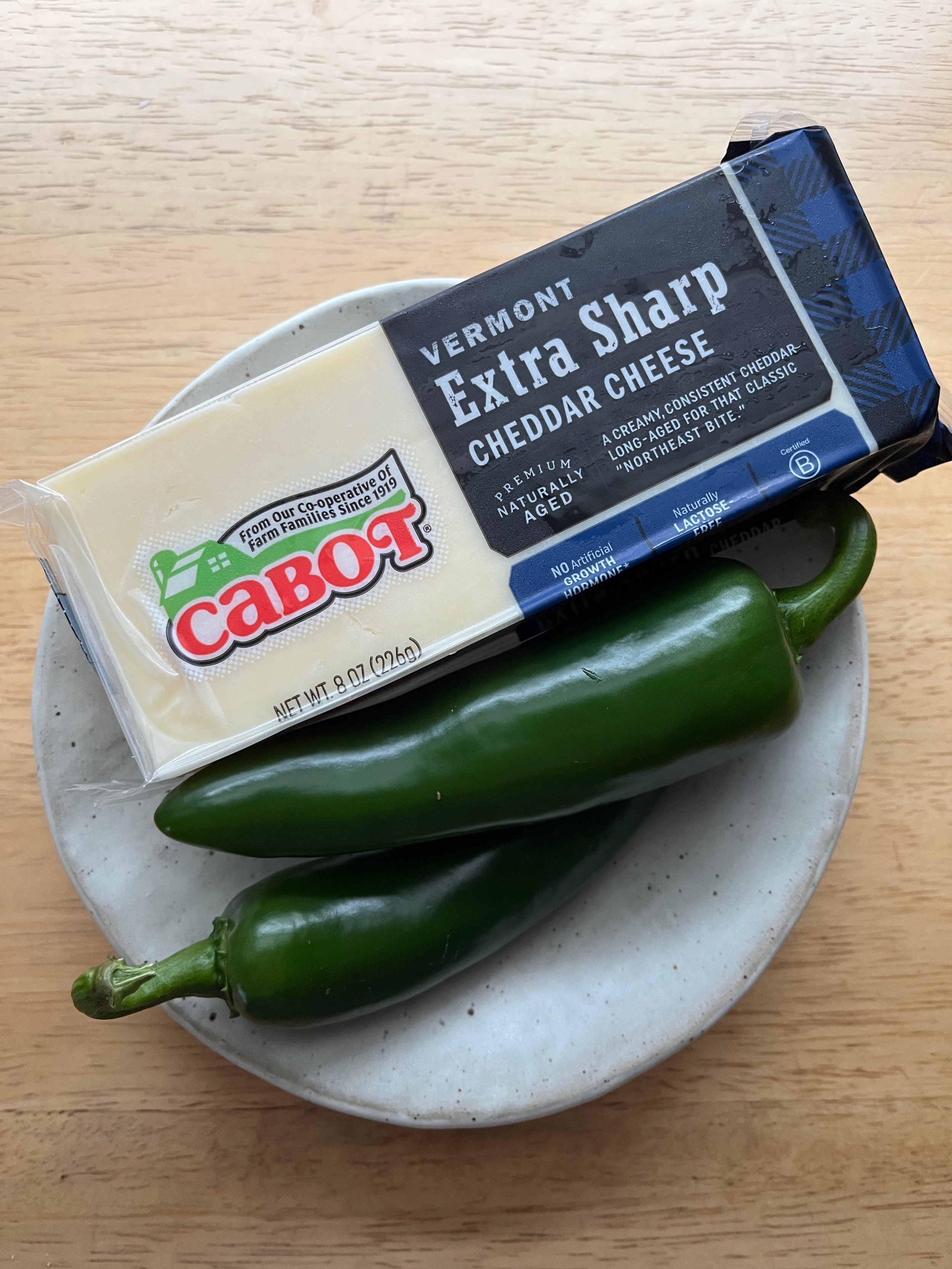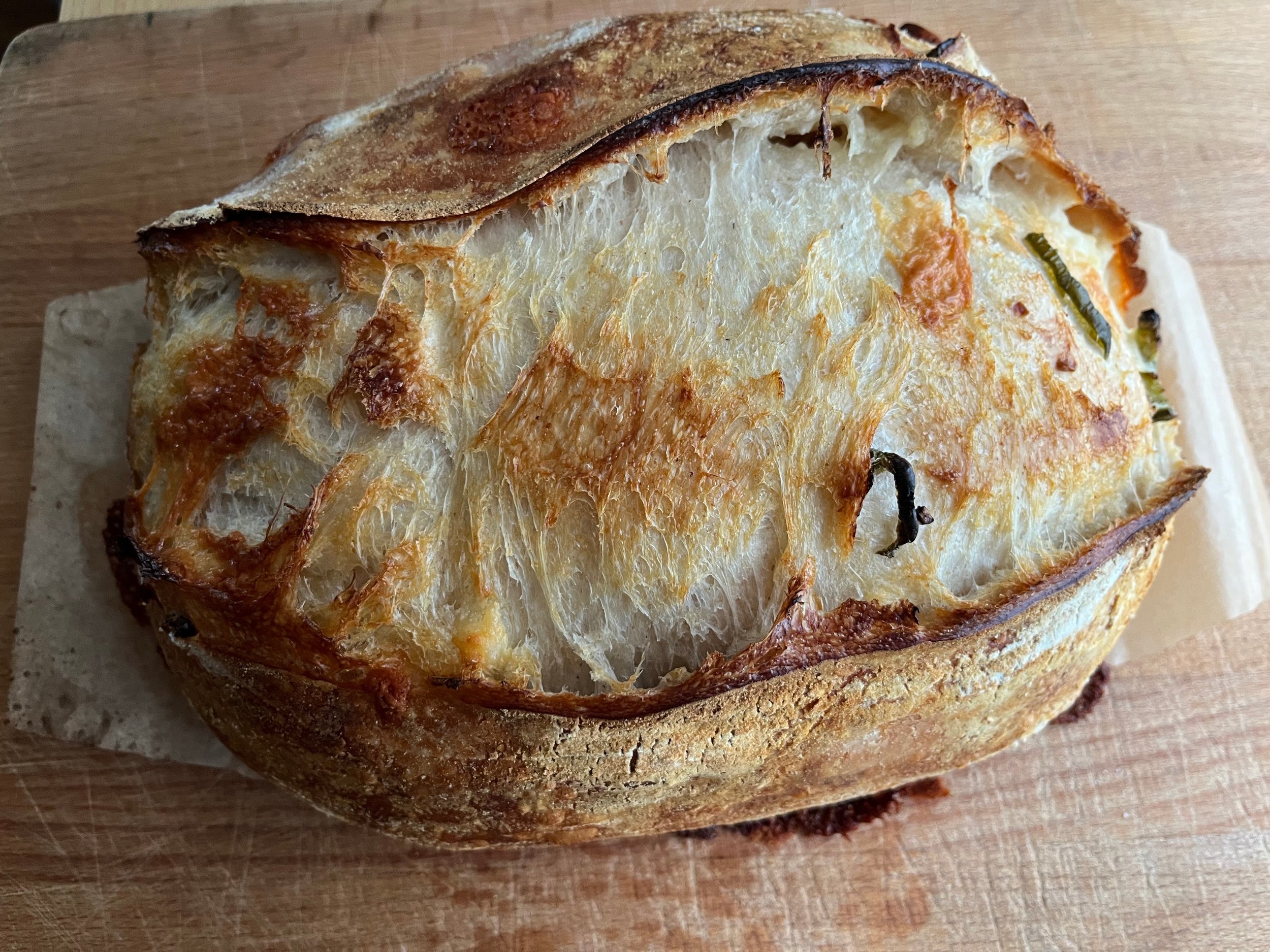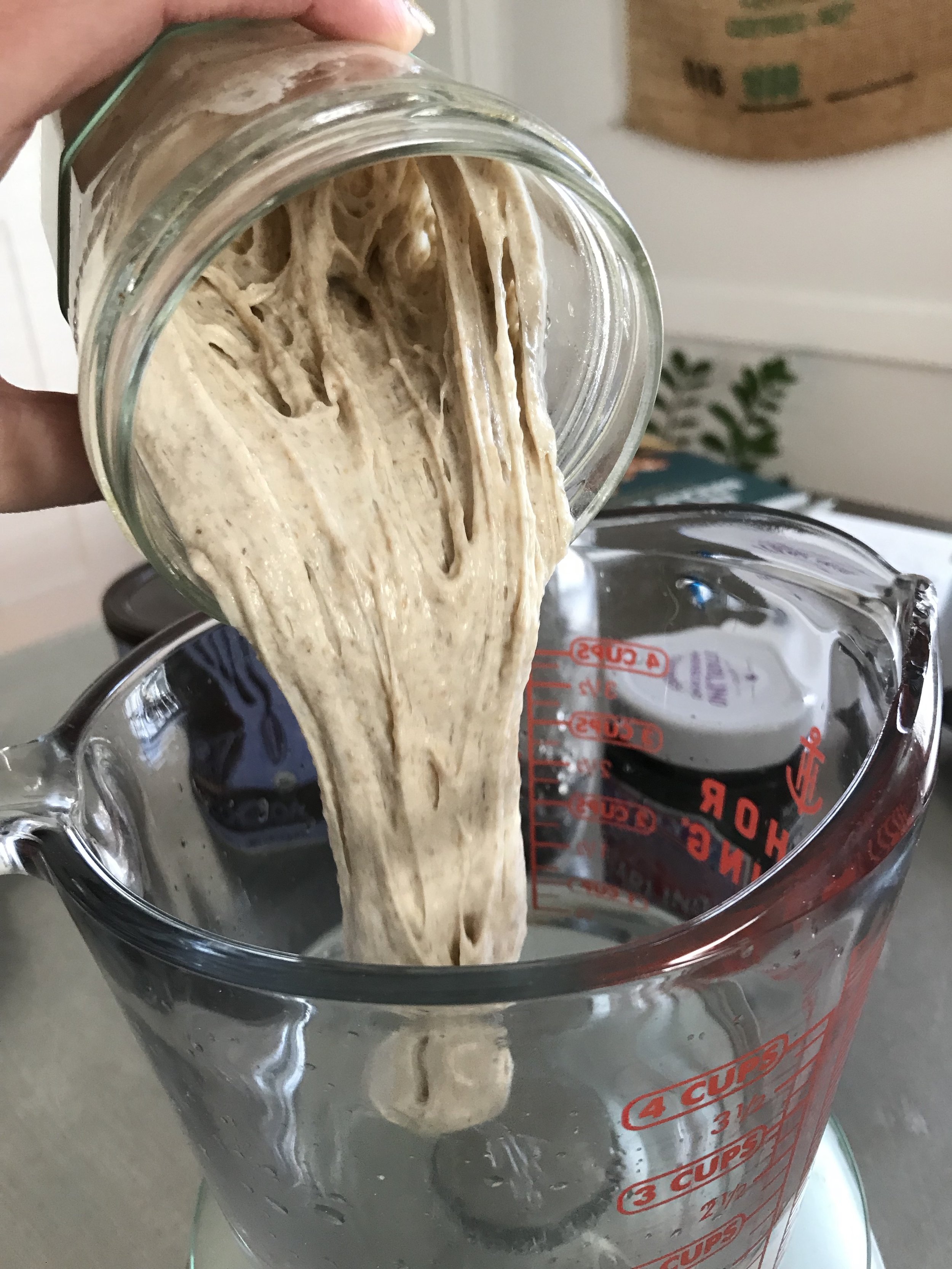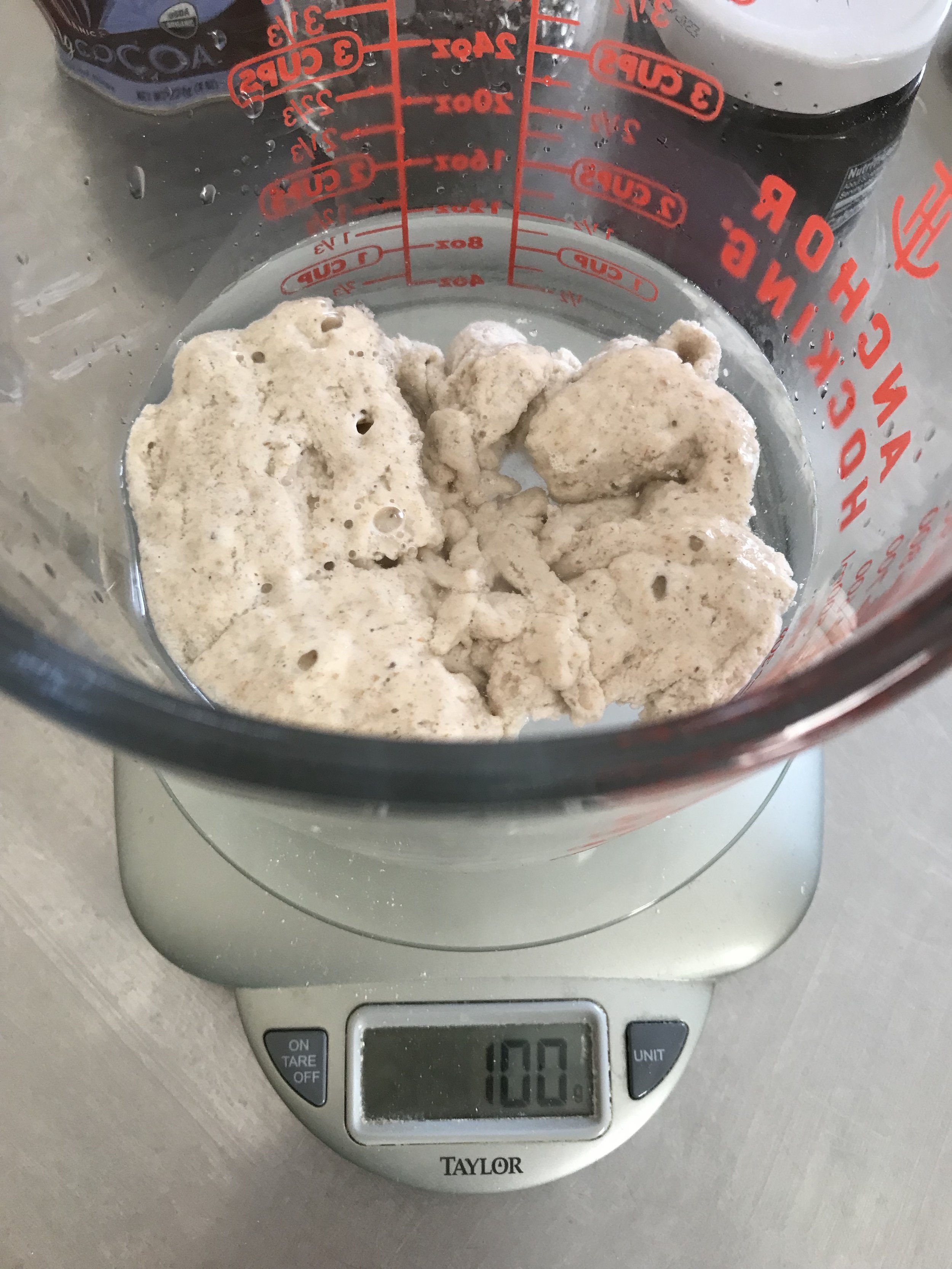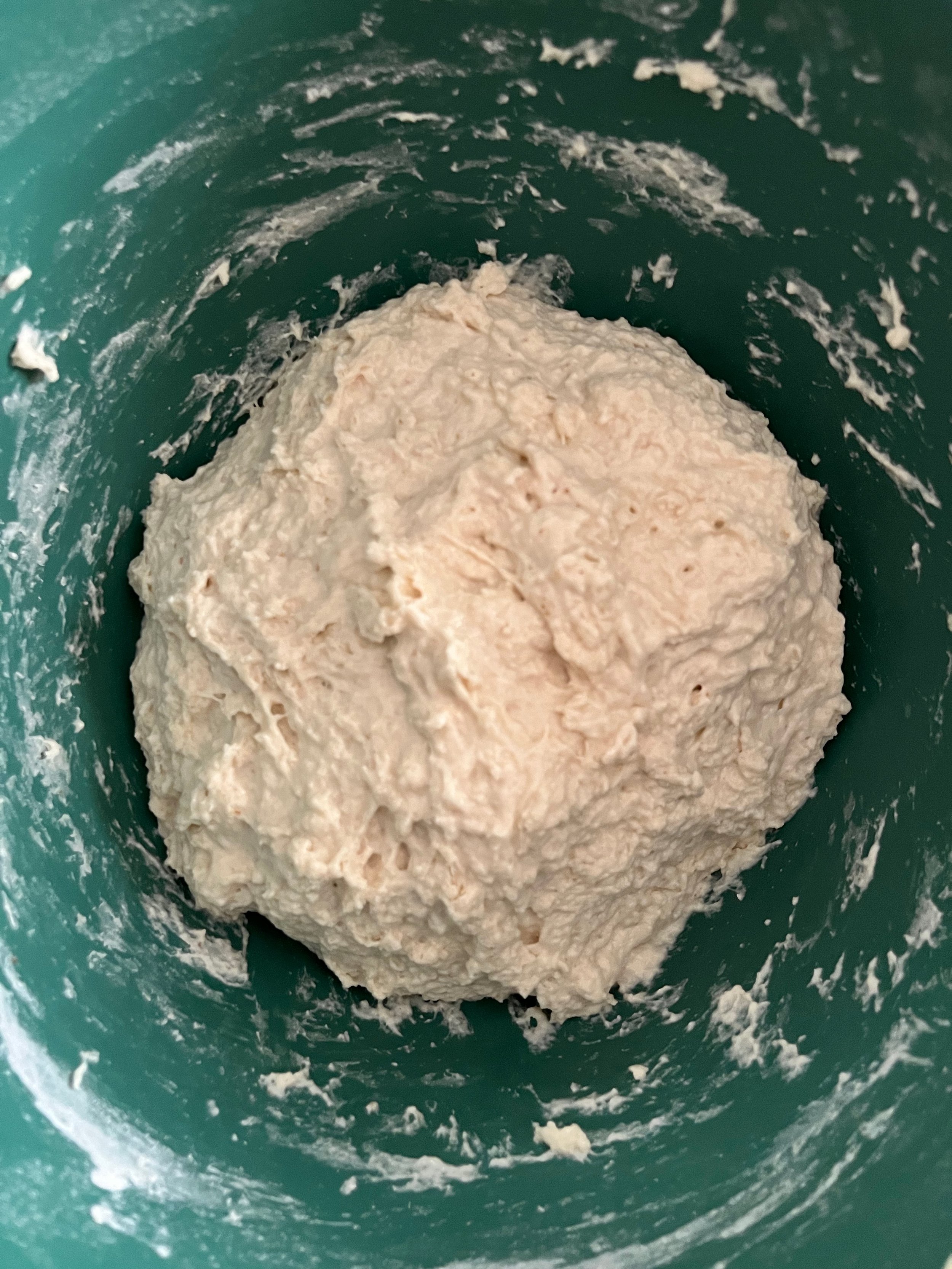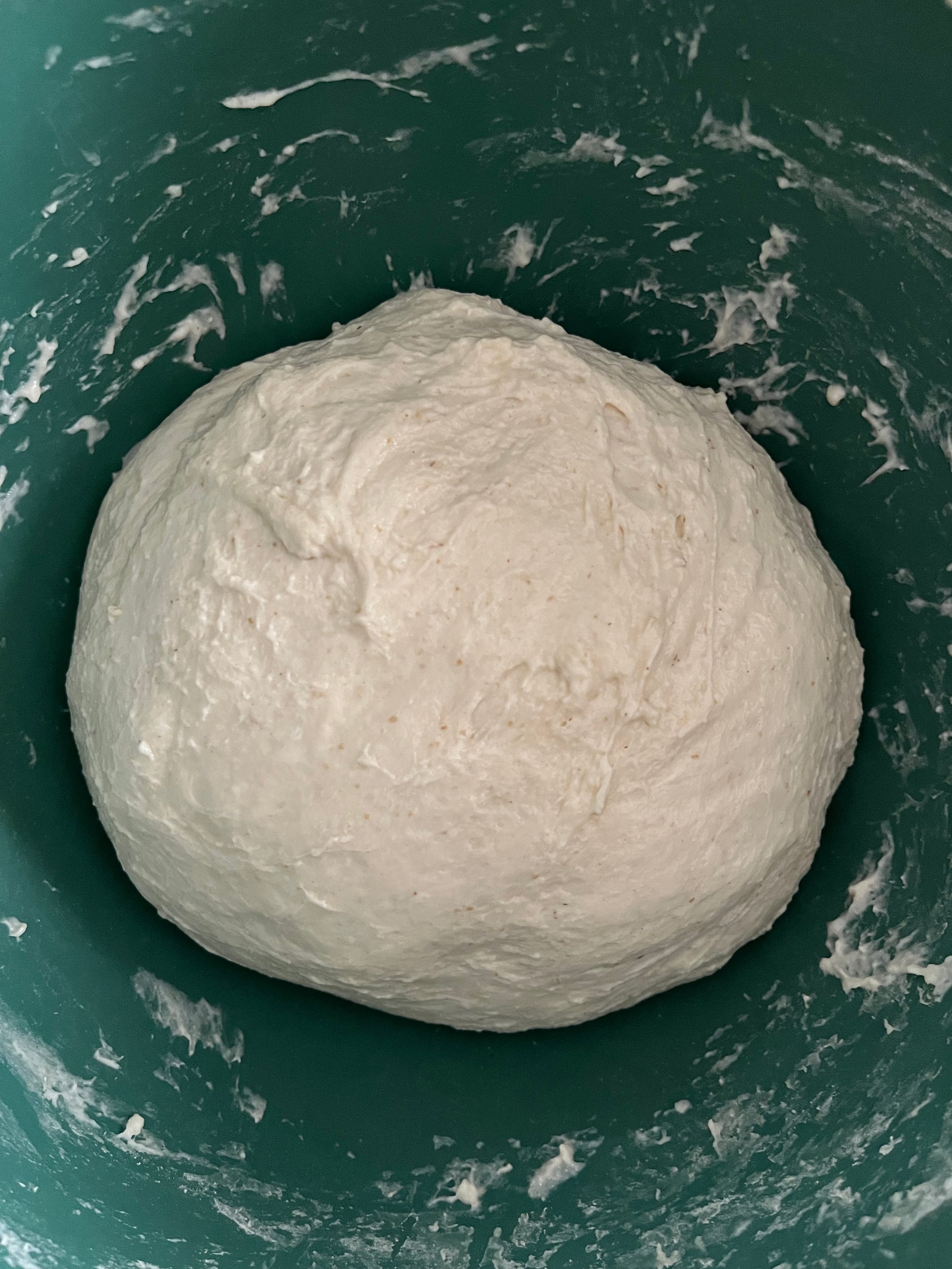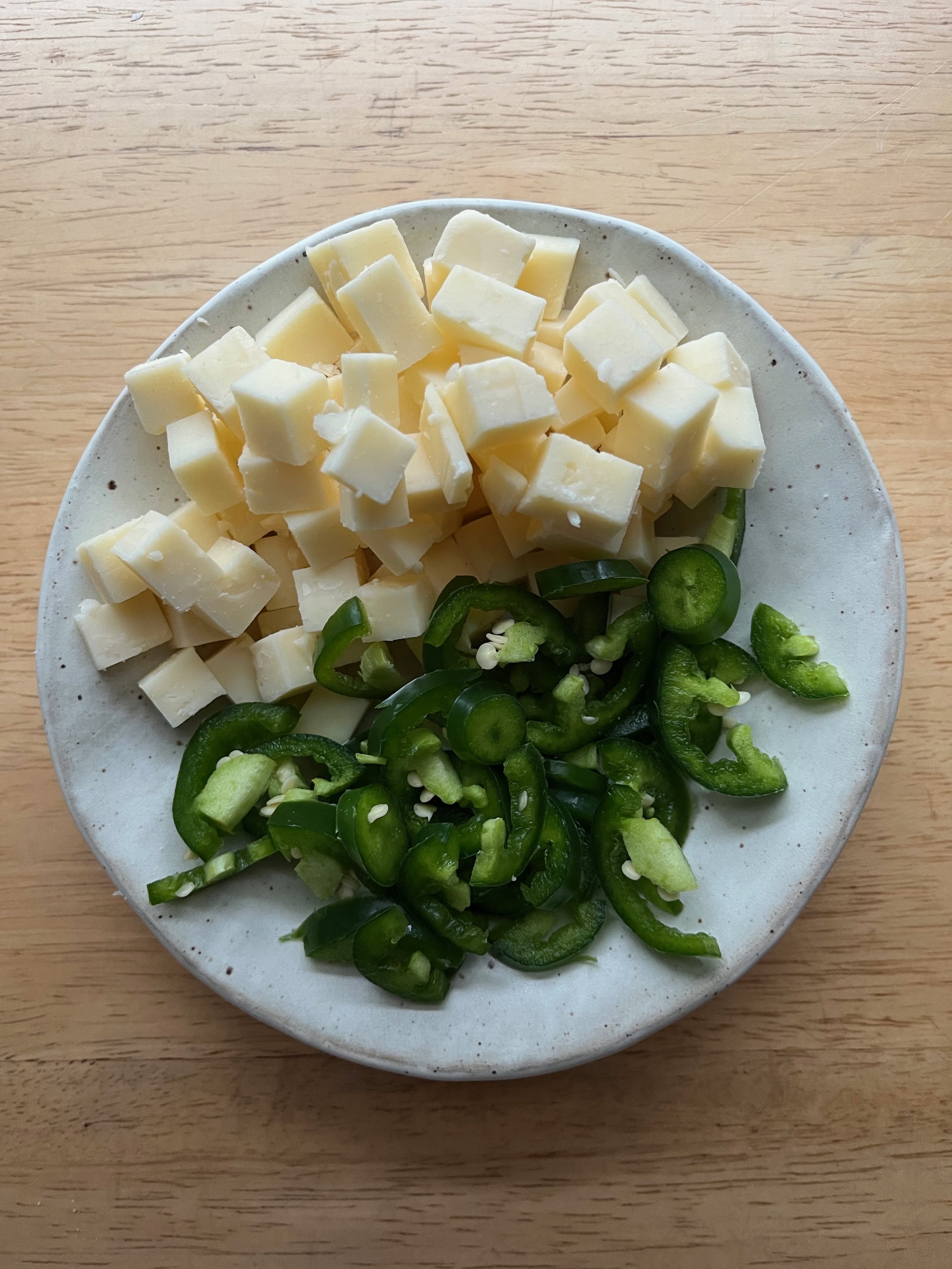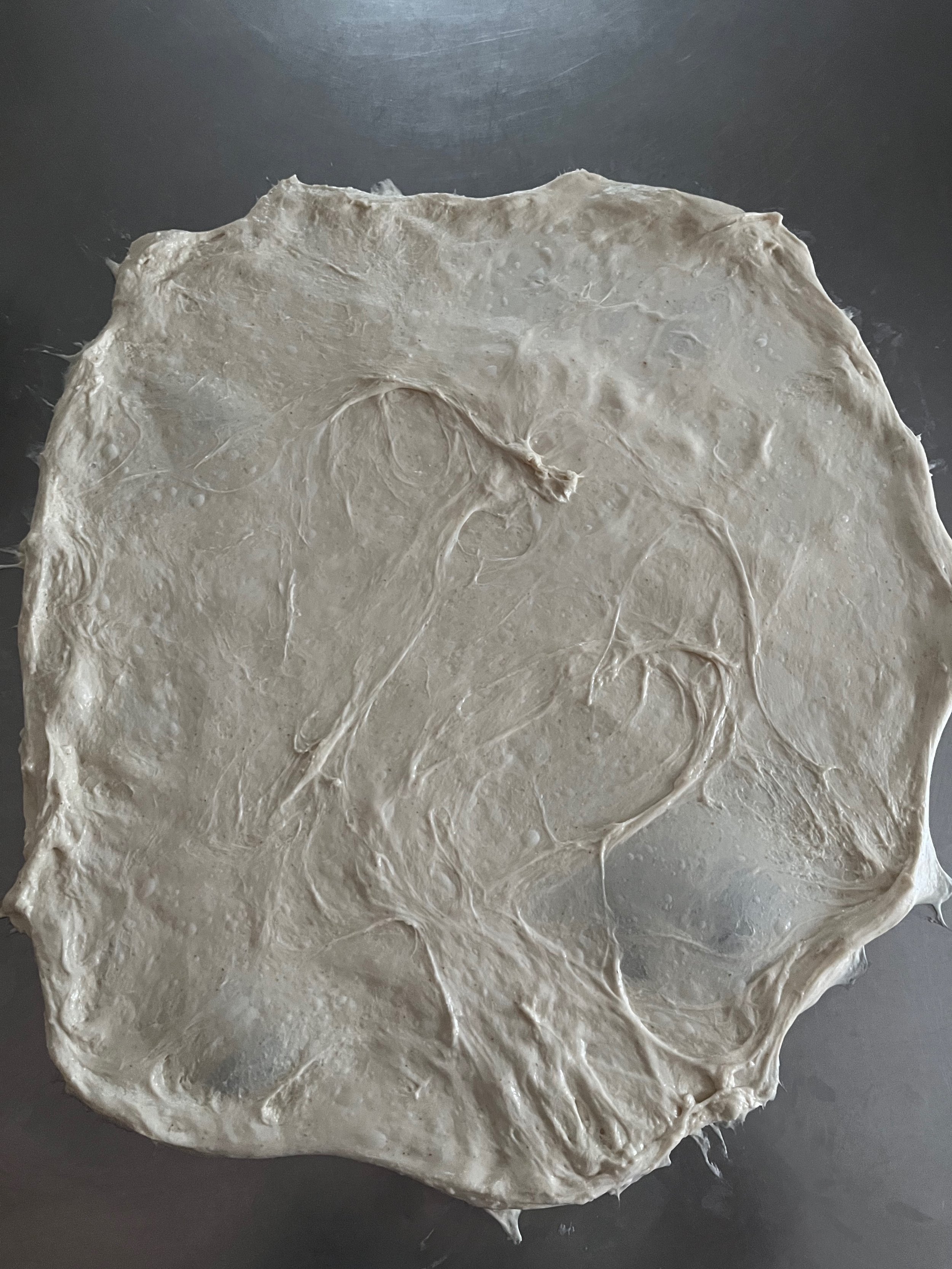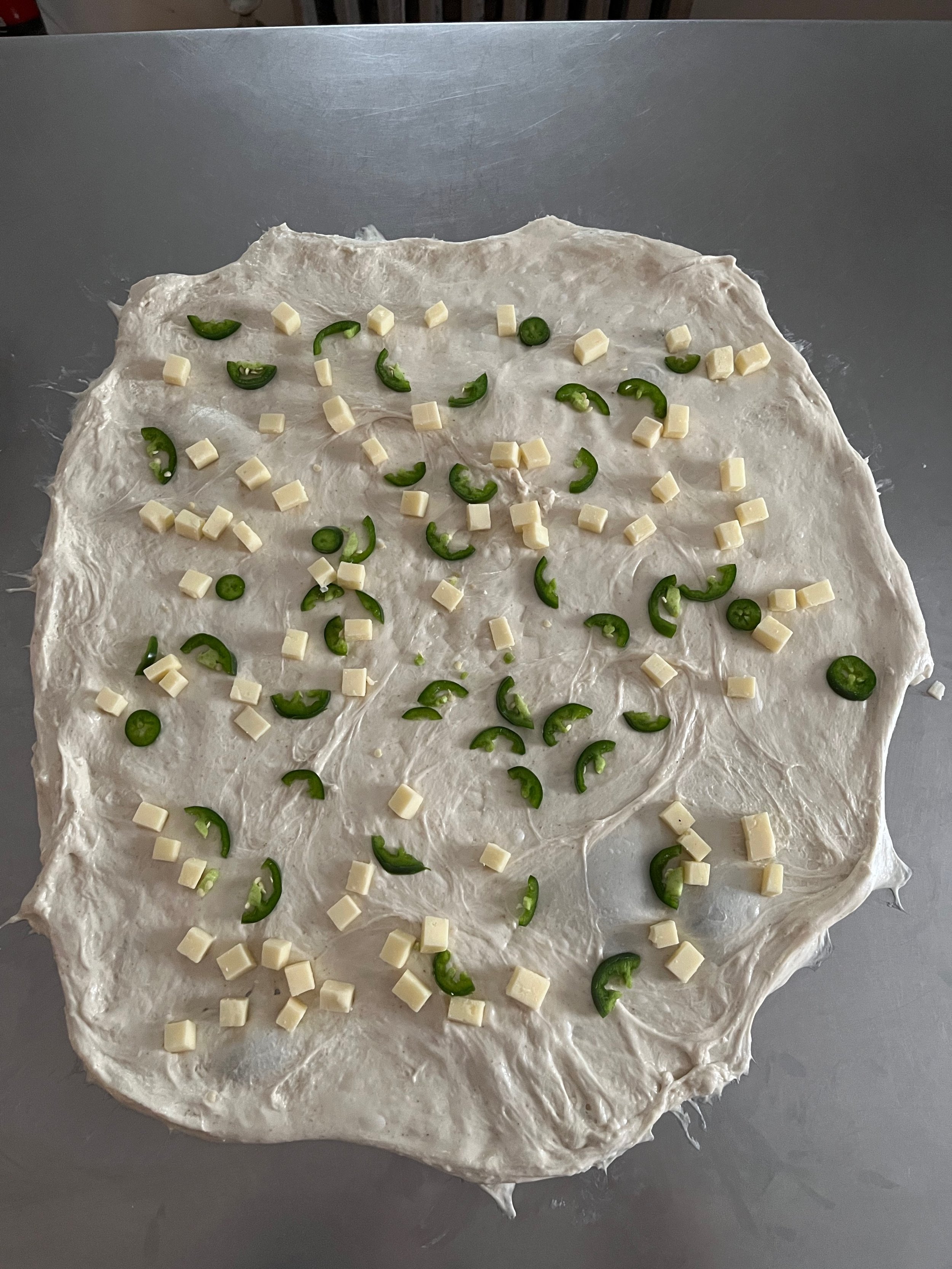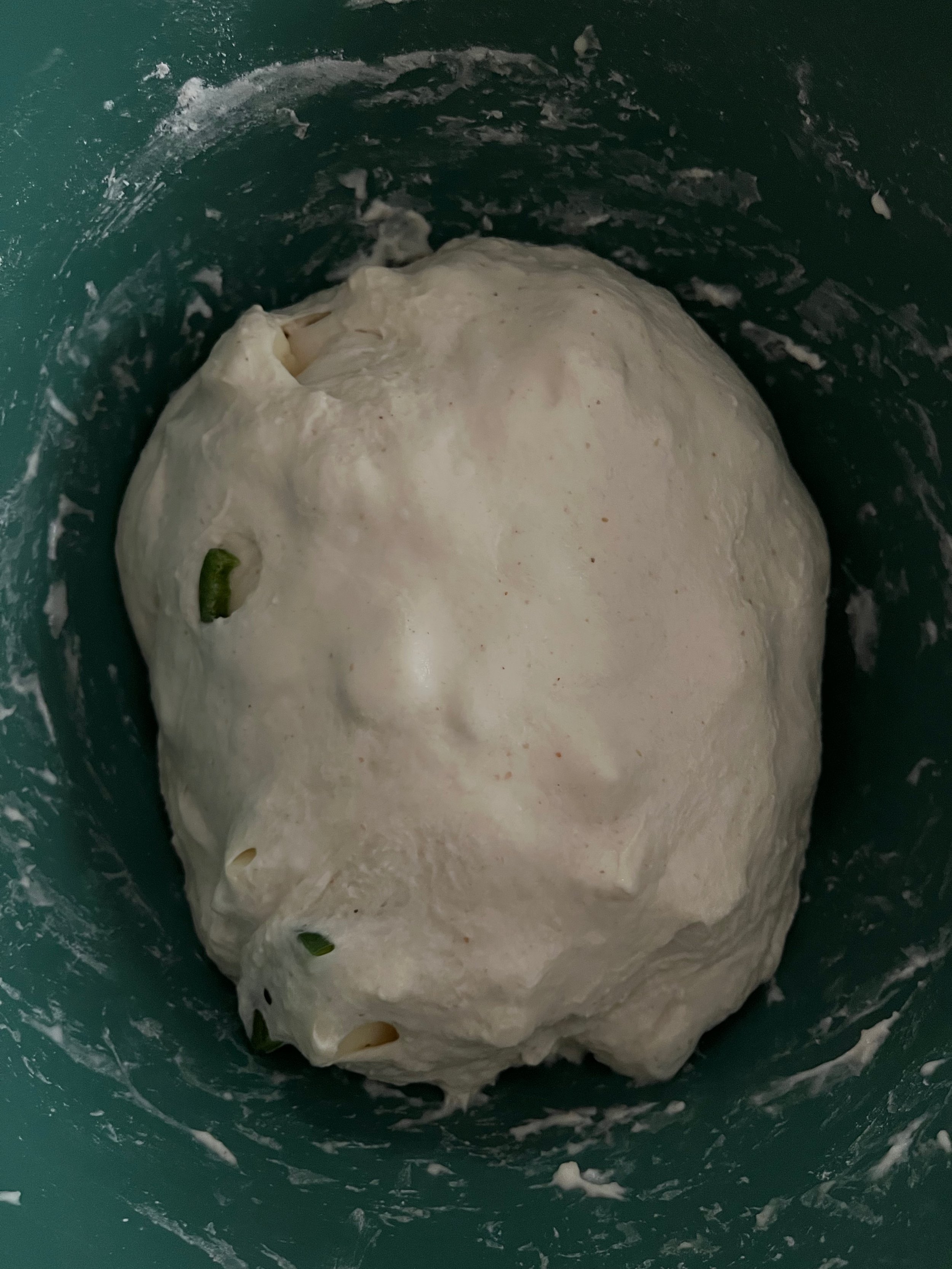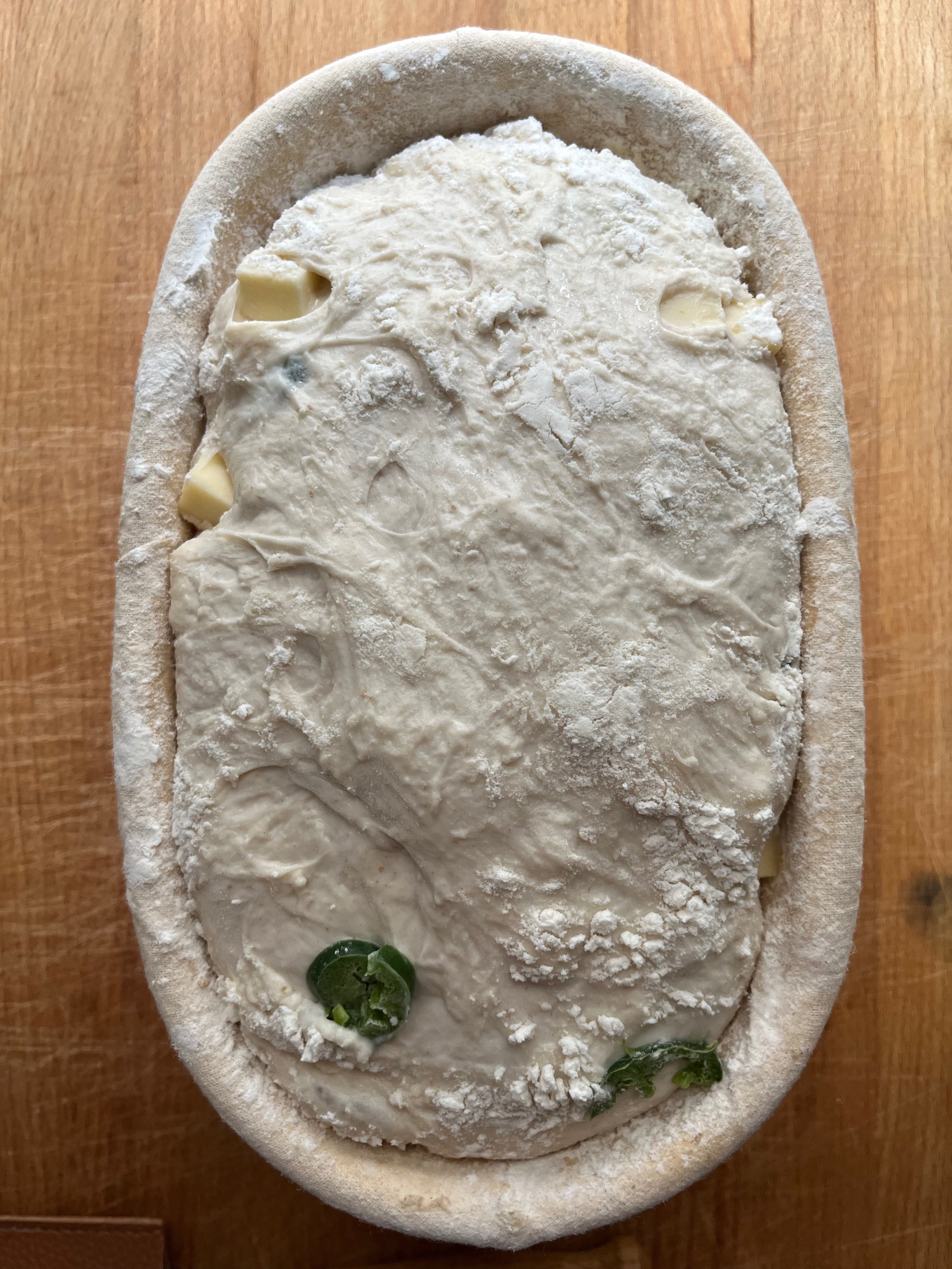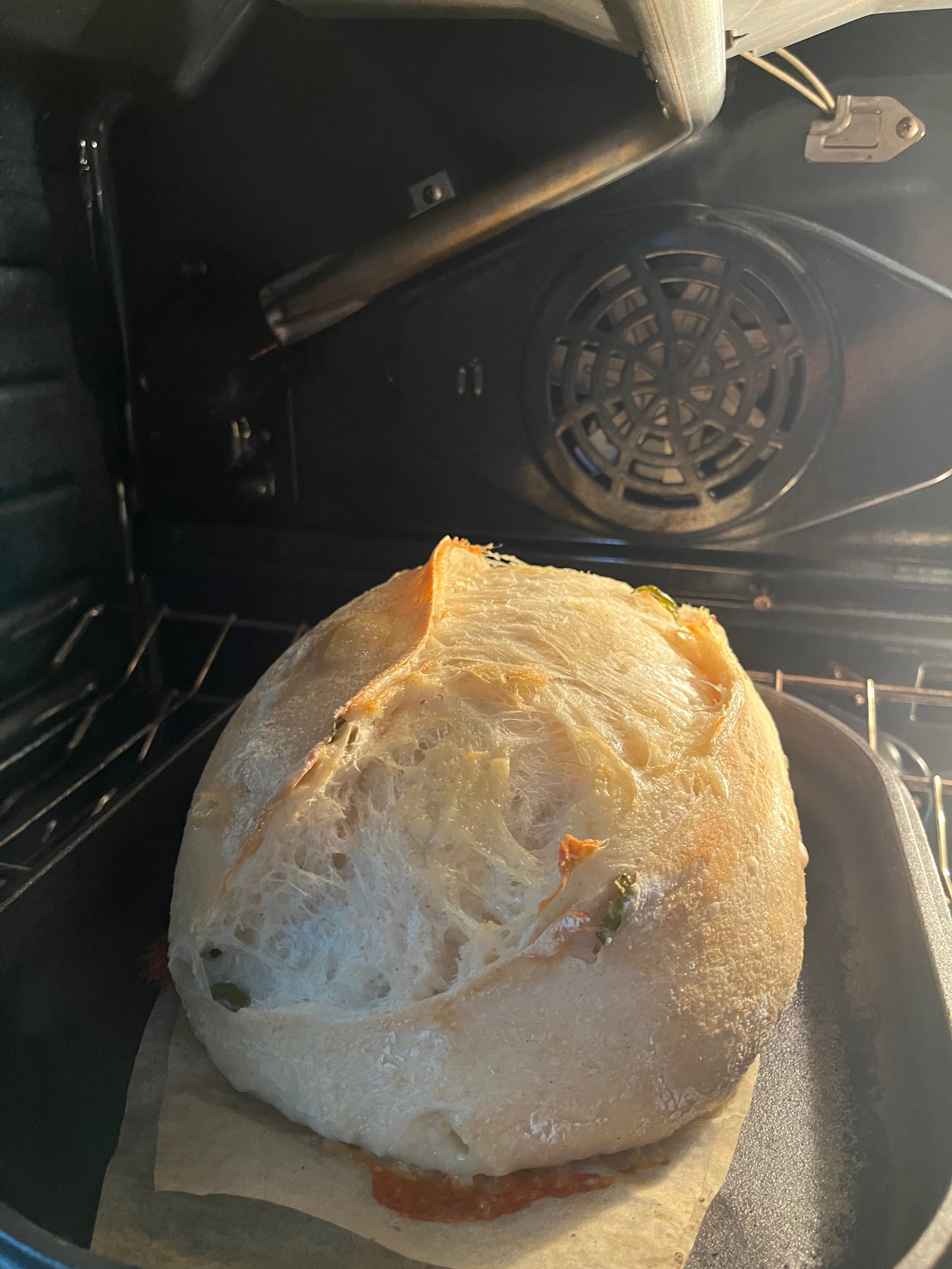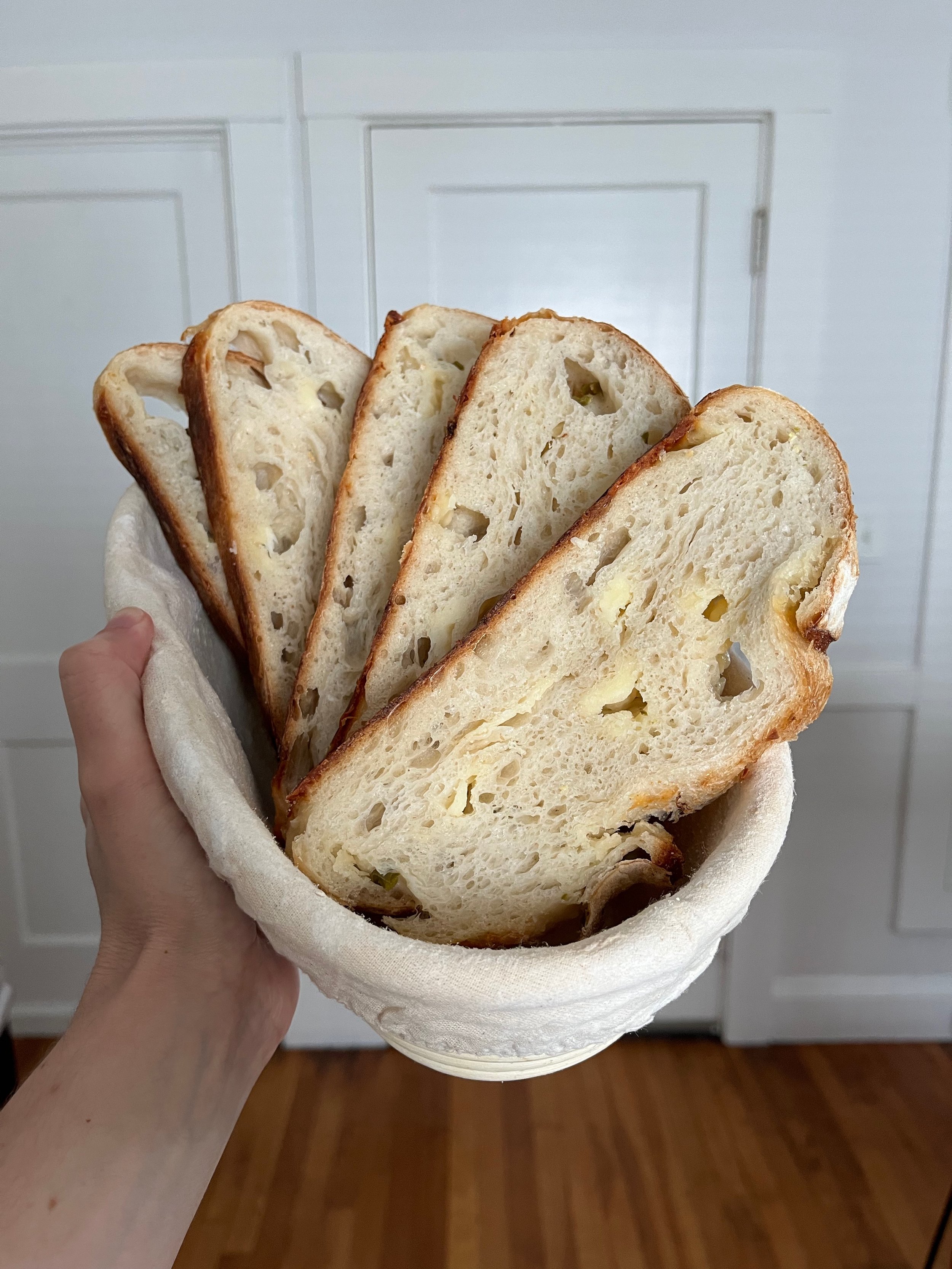Cheddar Jalapeño Sourdough
The end of summer is always such a nostalgic time! The end of lazy beach days that end with huge ice cream cones, back to school, a turn in the weather, and so on. Along with these changes, though, comes the BEST time of year for local produce here in New England. We’ve been devouring tomatoes, peppers, kale and… jalapeños(!) from our garden this year. In honor of the late summer harvest, I bring you a truly delectable cheddar jalapeño sourdough. Grab a block of Cabot Extra Sharp Cheddar and give yourself the gift of this loaf this weekend!
If you’re making this dough on the weekend, you’ll want to start feeding your sourdough starter on Wednesday or Thursday so that it’s ripe for use Saturday. I use 100g of active/ripe starter in this recipe, but if you prefer less feel free to go ahead with 50-75g. The most important part is paying close attention to the dough as it’s rising to make sure it has increased in volume by about 1/3 and is visibly puffy/bubbly.
For the dough:
500g bread flour
365g water
100g sourdough starter
12g salt
For filling:
4-6g cubed or shredded Cabot Sharp Cheddar
1-2 diced jalapeños
Instructions:
Measure 100g sourdough starter into the remaining 365g water and whisk to combine.
Add the water-stater to the flour and mix until no dry bits remain. Cover and let the dough rest for about 30 minutes.
Pictured below: on the left, the dough right after the initial mixing; on the right, the dough after the first stretch and folds.
3. After the initial 30 minute rest, sprinkle the salt on top and (using wet hands/fingers) pinch the salt into the dough. Then, do some rounds of stretch and folds until the dough forms a smooth ball and the salt has been incorporated. Cover and let rest for another 30 min.
4. 30 minutes after adding the salt, it’s time to laminate the dough and add fillings! This is my preferred way to add strength to the dough while simultaneously incorporating fillings completely evenly. If you don’t want to laminate, you can put the fillings on top of the dough and incorporate them over several rounds of stretch and folds. Lamination is pictured below.
Instructions continue below. See here for more lamination instructions.
5. After laminating the dough and adding the fillings, return the dough to the bowl. Cover and let rest for 45 minutes. The rest of the bulk fermentation schedule goes roughly as follows:
Lamination + 45 minute rest.
Stretch and folds (or coil folds) + another 45 minute rest.
2nd set of folds + another 45 minute rest.
3rd set of folds + another 45 minute rest.
Let the dough sit undisturbed for the remainder of the bulk fermentation - usually anywhere from 2-4 hours for me, depending on the temperature and weather.
6. When your dough is ready to shape, line a banneton with rice flour (or generously with AP or bread flour) and lightly wet (or flour) a work surface. Shape your dough into a taut ball or oval (depending on what shape you’re going for). Cover, and place it into the fridge overnight.
7. In the morning, pre-heat the oven to 475F with your baking vessel inside (dutch oven or heavy cast iron pot with a lid).
8. Remove the dough from the fridge, uncover, place a piece of cut parchment paper on top and flip the dough out. Score your dough and then carefully lower it into the hot baking vessel. Cover and bake for 25 minutes.
9. Then remove the lid and bake for an additional 15 minutes. This dough is dense and may take longer to bake than usual. If the bottom is burning, feel free to reduce the oven temperature or let it finish cooking outside of the baking vessel.
10. Let the bread cool for about an hour before slicing (if you can wait…). Enjoy!
If you make this, I’d love to see! Tag @nokneadtoworry on Instagram. Thank you to Cabot Creamery for sponsoring this post.
